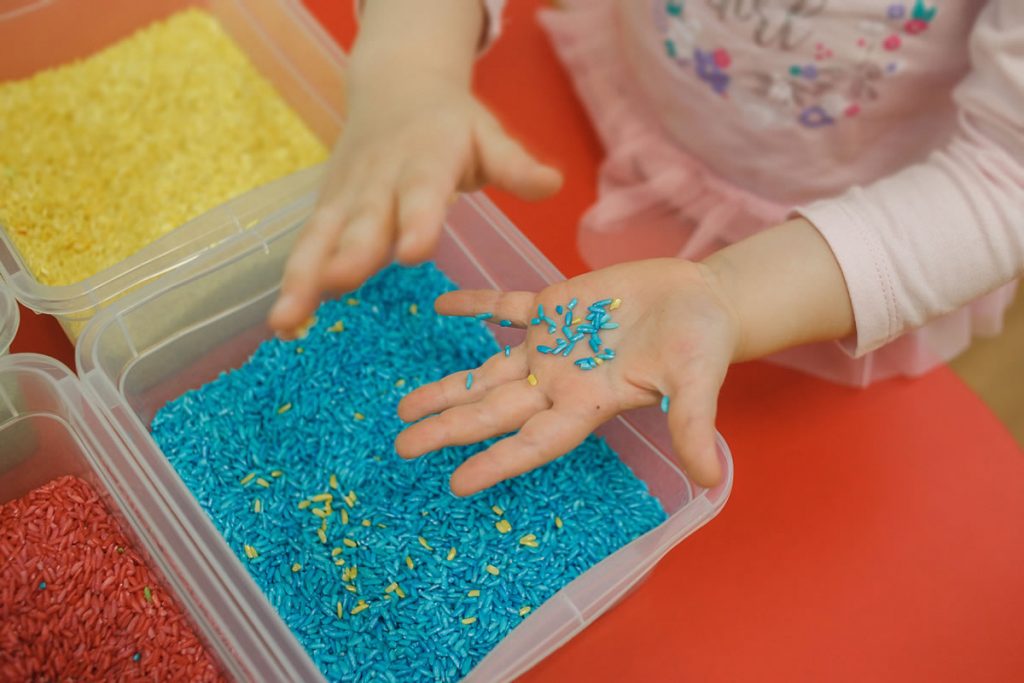The heuristic game is perhaps the first playful experience that our children have in school or in the early stages of early childhood education. That is why this type of activity is ideal for children between the ages of 1 and 2 . That is why the so-called “nurseries” or early childhood education schools are responsible for stimulating this type of game in children of such a young age, based on everyday experience.

This type of activity occurs in practically all parts of the world in the earliest ages, but not all of them receive the same name. For example, here it is usually known as “boxes or sensory experiences ”, but in other countries this activity has been tried to give a perhaps more friendly name which is “The basket of treasures”. It certainly sounds like a fun and interesting activity!
But what exactly is the idea of the heuristic game and how can it be carried out? Let’s look at some more details below.
How to play the heuristic game
The game consists of having a basket of suitable size for children from 1 to 2 years old and inside it to put everyday objects. These may include: a comb, a shaving brush, a painting brush, a wooden spoon, a toothbrush, corks, plastic caps or sheets, scraps of fabric, balls, clothes pegs, fans … In short, the box or basket can be filled with common objects of everyday life. If we do not want them to be new, they can be used but always properly disinfected.
The activity is carried out without being directed, that is, it does not have any type of prior instruction since it is about leaving the children to act freely. The intention is that the child can freely explore a large number of non-didactic objects to identify textures, sizes, weights, colors, smells and sounds. The ultimate goal of this type of activity is to stimulate the senses of the little ones as well as their ingenuity and imagination.
Of course, the teacher, parent or instructor must be attentive to the resolution of conflicts that may arise, especially if it is played in the company of many children. Therefore, the person in charge of monitoring the activity should not favor, encourage, praise or influence in any way what children should do, but should monitor that problems may arise. In other words, the main function is to be aware of what the little ones do with the objects and to observe which one they will be interested in without intervening . All this also serves so that children can freely discover their tastes, without conditioned or preconceived ideas.
Phases to develop the heuristic game
- Material preparation
The teacher prepares all the material in the basket. Choose a large number of utensils of a real character, excluding all those that may not be suitable for the manipulation of children. All objects that have the ability to cut are excluded, such as: scissors, knives, blades or others that put the safety of the little ones at risk, as well as small objects that can be easily swallowed.
- Exploration
In this phase you have to open and close the basket, cover and uncover the toys , stack, compare, fill and empty. It is the stage in which the child explores. At the end of this stage the child has exercised and has adjusted his physical, mental, emotional and especially social capacity.

- Collecting
It consists of classifying the materials, part in which the teacher intervenes directly. It is also responsible for guiding the children to place the objects in their place , as well as ensuring order within the classroom.
This activity is of vital importance for children during early childhood because it develops freely , without any type of intervention. One of the main objectives is for the child to be the protagonist of their own learning . In addition, they will develop cognitive, perceptual, body, affective and social capacities, significantly influencing their relationship at home and in the family.
In turn, at the end of the activity the teacher will be able to learn more about each child and identify the qualities to be strengthened in each one . This is where the observation technique of the teacher must be sharp to understand and realize what is happening in the classroom, as well as that of the parents at home.











































































































